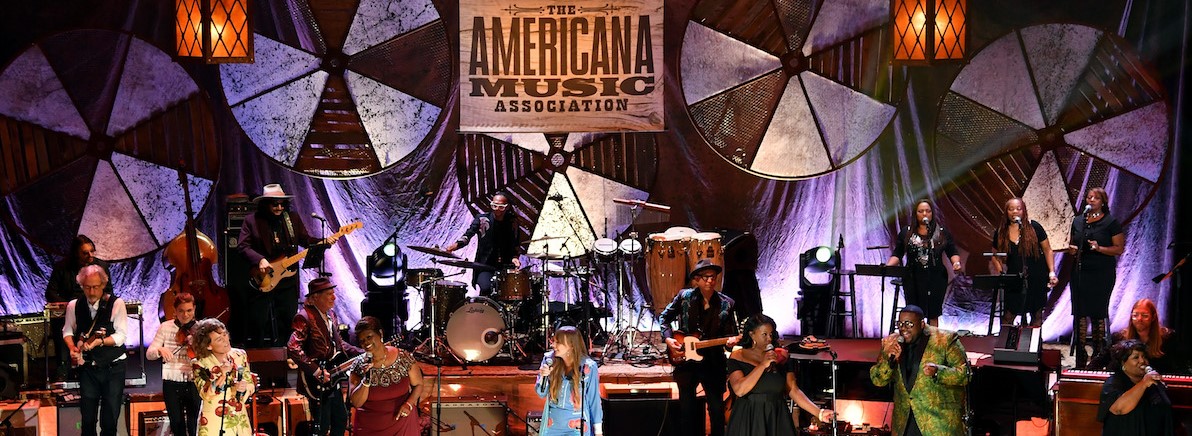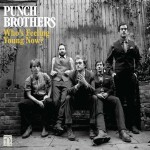 The inaugural Mountain Song at Sea, a bluegrass festival on the ocean, just added the Punch Brothers to a line-up that already includes the David Grisman Sextet, Del McCoury Band, Steep Canyon Rangers, Tim O’Brien and Bryan Sutton, the Kruger Brothers, Peter Rowan, Larry Keel and Natural Bridge, The Travelin’ McCourys, Shannon Whitworth, Della Mae and Town Mountain.
The inaugural Mountain Song at Sea, a bluegrass festival on the ocean, just added the Punch Brothers to a line-up that already includes the David Grisman Sextet, Del McCoury Band, Steep Canyon Rangers, Tim O’Brien and Bryan Sutton, the Kruger Brothers, Peter Rowan, Larry Keel and Natural Bridge, The Travelin’ McCourys, Shannon Whitworth, Della Mae and Town Mountain.
The cruise comes from Sixthman, the same company that runs Cayamo, the Americana music cruise we’ve reported on extensively.
Details about the cruise can be found here.
.
Tag: bluegrass music
Review: David Naiditch’s Douce Ambiance: Gypsy Jazz Classics
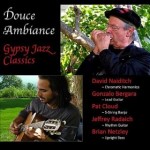
By Joe Ross
My first introduction to chromatic harmonica came as a young teenager in the 1960s when I picked up a Music Minus One LP called Blues and All That Jazz featuring world famous harmonica virtuoso Cham-Ber Huang from Shanghai and New York.
While many learn harmonica by ear, Mr. Huang’s material was bonafide instruction that brought me many hours of enjoyment as I learned about such techniques as closed and open tone colors, wah-wah effect, tremolo effect, breath control vibrato and blue tone slurs. The course then provided studies in folk blues, swing blues, progressive jazz blues, harmony progressions and exercises. Mr. Huang also wrote a complete two-volume method, “The Art of Playing Chromatic Harmonica,” and he developed an instrument called the “Chordomonica” which allowed melody and harmony to be played simultaneously. He worked on developing a concert harmonica with broader dynamic range, greater volume and resonance and a wider variety of tone colors.
As a teen, Los Angeles harmonicat David Naiditch first got involved with the instrument through the playing of legendary bluesman Sonny Terry. By the 1960s, Naiditch was teaching and performing throughout southern California. He’s clearly a guy who stuck with it, studied harmonica for decades, and developed his skill to a high degree of mastery. Naiditch now plays Seydel Saxony or Hohner CX-12 jazz models.
I first met Naiditch in a bluegrass festival jam session and thought, “Who is this guy who’s able to hit all the notes and nuances in intricate fiddle tunes?” Turns out Naiditch is well-known in the L.A. music scene, and he’s just as comfortable with blues, country, swing, and bluegrass as he is with gypsy jazz. His eclectic 2005 album with 36 tunes is calledHarmonica and Guitar Duets. His highly-acclaimed 2008 CD was High Desert Bluegrass Sessions, and in 2011 he put out a lively release called Bluegrass Harmonica.
When properly played, a fully chromatic instrument (capable of playing in all keys) produces a bouncy lilt that can handle even the most complicated melody and improvisations. With multi-tracking, twin harmonicas offer both melody and harmony to the opener “Tchavolo Swing,” written by Tchavolo Schmitt. Nine of the 15 tunes come from the repertoire of Django Reinhardt, and we also hear classics like George Gershwin’s “Oh, Lady Be Good” and Dorado Schmitt’s “Bossa Dorado.”
The project closes with “Gonzalo’s Castle,” penned by one of the other four fine musicians on this album – lead guitarist Gonzalo Bergara. We also hear the accomplished musicianship of Pat Cloud (5-string banjo), Jeffrey Radaich (rhythm guitar), and Brian Netzley (upright bass). Bergara, Radaich and Netzley are members of The Gonzalo Bergara Quartet.
Naidtich and company are clearly well versed in the standards of gypsy jazz, and they are all very proficient, both musically and technically. Naiditch phrases with great awareness and sensitivity in taste, and his articulation is remarkable. This is a pleasing instrumental album, with some instrumentation not commonly heard in the gypsy jazz context. It works!
Review: Bill Monroe 100th Year Celebration: Live At Bean Blossom
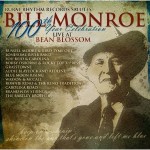 By Joe Ross
By Joe Ross
– A CD sampler of live cuts from a bluegrass festival can rarely capture the real feeling and spirit of those special musical moments when bands play their hearts out to thousands of fans. However, second best to actually being there, some favorite LPs of mine were those double-disc sets with an array of professional bluegrass bands on a a festival’s stage. The 1973 Bean Blossom LP comes to mind, and The Stanley Brothers’ Live at McClure album from is another winner. In more recent times, the Rural Rhythm record label released Live at Graves Mountain (RUR-1073), a great sampling of music from the 18th Annual Syria, Va. bluegrass festival in June 2010. That product celebrated the 55-year anniversary of the record label. Now they’ve released “Live at Bean Blossom” (RUR-1090) as a salute to Bill Monroe who would’ve been 100 years old in 2011.
Live at Bean Blossom was recorded June 11-18, 2011 at the 45th Annual Bill Monroe Festival in Indiana. Twelve different professional acts pay tribute to the Father of Bluegrass Music. The album begins with “Uncle Pen,” one of the greatest bluegrass songs ever written and a tribute itself to one of the Big Mon’s key influences. “Can’t You Hear Me Callin’” is one that Bill Monroe referred to as a “true-life song,” with its autobiographical, yet also universal meaning. Grasstowne’s acappella quartet arrangement of “Were You There?” is particularly reverent and moving.
The crowd never tires of the classic “Footprints in the Snow.” Some of the bands also choose to cover some of Monroe’s newer material such as “Six Feet under the Ground” (1978) and “Southern Flavor” (1988), as well as some of his most powerful instrumentals from the ’40s and ’50s, including “Big Mon” and “Bluegrass Breakdown.” The latter is performed with the three mandolins of Ronnie Reno, Jackie Miller and John Mayberry.
In the introduction to “With Body and Soul,” Chris West (of Blue Moon Rising) says, “I think Bill Monroe was the best songwriter ever, both in melody and lyrics. They’re just awesome.”
This album affirms it, as well as the fact that Monroe started a genre of music that continues to grow around the world today. Every bluegrass musician has memories they cherish of Bill Monroe and his music. The man was larger than life, and this CD provides only a snapshot of the tremendous influence he’s had on so many others.
(Follow Sun209 on Twitter at sun209com and on Facebook.)
Review: Carolina Road’s “Back to My Roots”
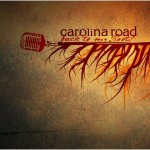 By Joe Ross
By Joe Ross
It’s been about five years since I reviewed Carolina Road’s two releases on Tom T. Hall’s Blue Circle Records label. I found the hardworking band from North Carolina to be fully dedicated to presenting a traditional bluegrass sound with a copious amount of contemporary charisma. Now associated with Rural Rhythm Records, Back to My Roots is the band’s second release on that label. While the band has experienced a few personnel changes on guitar and bass over the years, the core of this group remains Lorraine Jordan (mandolin, vocals), Josh Goforth (fiddle, vocals), and Ben Greene (banjo, vocals). They bring strength and stability to the table. The band’s newest members are Tommy Long (guitar, lead vocals) and Eddie Biggerstaff (bass). Both have plenty of experience and fit right in.
Lorraine or Tommy had a hand in the songwriting of three numbers (“Back to My Roots,” “Granny’s Garden,” “Cold Carolina Snow”), and the title cut recalls the country road, whippoorwills, hilltops, meadows, summer breeze and simple things from our past and upbringing. The rest of their set comes from a wide variety of suitable writers, including the Louvin Brothers, Clyde Moody, Mack Magaha/Don Reno, Randall Hylton, and Tom T. and Dixie Hall. Of special note are those two songs (“The Hills of Home,” “Sing a Bluegrass Song”) from fellow North Carolinian A. L. Wood, an expert banjo player and singer who recorded with his Smokey Mountain Boys on the Rebel label back in the 1970s. The Halls’ “A Light in my Window, Again” was inspired by Kentucky Governor Paul E. Patton’s speech at the Bill Monroe homeplace dedication in Rosine, Ky.
“Back to My Roots” indicates that Carolina Road is still proud of its traditional music foundation, but the band’s character and persona are much deeper than just the solid presentation of a few traditional numbers. They also have an affinity for newer tunes from contemporary writers. It’s a propulsive and potent combination. Carolina Road doesn’t have the intensity of Monroe’s high lonesome, but they have great familiarity and knowledge of the style. They comfortably and successfully incorporate many elements of the traditional sound, capture the heart of the genre, and tap into its soul with their accomplished musicianship.
Review: Mary Z. Cox -“Girl with the Banjo Tattoo”
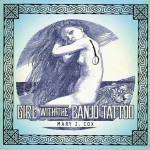 By Joe Ross – Mary Z. Cox is an accomplished player, teacher (and collector) of banjos and mountain dulcimers. At last count, she has 17 banjos and 12 dulcimers. The Florida-based artist’s seventh album, Girl with the Banjo Tattoo is a solo project with Mary playing one or two instruments on each of the 14 tracks. On one cut, “Chickens Crowin’ at Midnight,” she is joined by Ellen Sheppard on banjolin.
By Joe Ross – Mary Z. Cox is an accomplished player, teacher (and collector) of banjos and mountain dulcimers. At last count, she has 17 banjos and 12 dulcimers. The Florida-based artist’s seventh album, Girl with the Banjo Tattoo is a solo project with Mary playing one or two instruments on each of the 14 tracks. On one cut, “Chickens Crowin’ at Midnight,” she is joined by Ellen Sheppard on banjolin.
Mary’s instruments of choice appear to be a John Bowlin 1865 fretless banjo that is played on that song and two others (“Pretty Polly, ” “Needed Time”), and her Goldstone 5-string cello banjo that appears in the mix of five songs. That instrument provides a sweet, mournful sound, and I wonder if she also has a bass banjo in her collection. It would no doubt be a killer to play due to its size.
On various other cuts, we hear Mary’s banjos with and without frets, ones with open back or resonator, and mountain dulcimers of mahogany, cedar, spruce and cherry. Quite novel, the album opens with “Last Chance” played on a cigar box banjo built by Joe Masel. It takes a discerning ear to hear the subtle variations among her instruments.
With such a rawboned approach, it’s a tad unfortunate that she also simplifies a few of the fiddle tune melodies and employs few variations in her short 2-3 minute song arrangements. She adds her guitar on “Star of County Down,” and I would’ve enjoyed hearing a few more instruments (e.g. guitar, bass, fiddle) for occasional accompaniment.
Despite these minor criticisms, the crowning moments for the “Girl with the Banjo Tattoo” are when regular and cello banjos are employed together (“Chinkapin Hunting,” “Gaspe Reel”), or when banjo and dulcimer provide bouncy melodic interplay (“Sweet ‘Bama,” “Goodbye Girls I’m Going to Boston”). I’m used to hearing “Gaspe Reel” at a slightly faster tempo, but Mary’s performance is a nice, rhythmically expressive rendition.
Besides her instrumental proficiency, Mary Z. Cox is also an award-winning singer, so I was surprised that she didn’t add her voice to the project on such numbers as “Scarborough Fair,” “Morning Has Broken” or “Pretty Polly.” That wasn’t her vision, however, for this spare front porch instrumental setting of clawhammer banjo and mountain dulcimer. I guess I would’ve preferred a more raucous and full sound, similar to that of Bob Flesher’s old-time minstrel and clawhammer banjo albums.
“Girl with the Banjo Tattoo” will gain plenty of traction and attention among banjoholics as it’s a well-wrought and captivating musical story that instrumentally carries us back to the old homeplace on the mountain in the mid-1800s. You’ve simply got to appreciate how the vivacious drive and charismatic magnetism of Mary Z. Cox’s banjo and dulcimer playing draw us right into her old-timey music.
